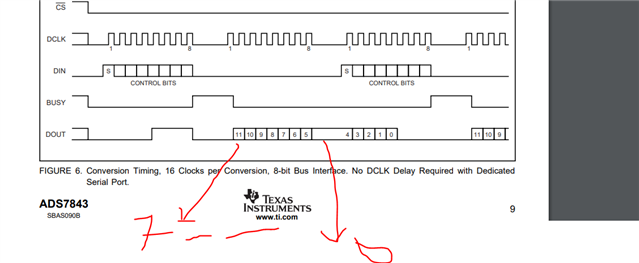Tool/software:
Hi support team all.
1. In FIGURE 5 on page 8 of the data sheet, is it correct to assume that the BUSY pulse width is equivalent to one DCLK period based on the contents of FIGURE 7 on page 10?
2. If ① is correct, is it correct to understand that the DOUT data output is output immediately after the BUSY output changes to LOW?
3. In FIGURE 5 on page 8 of the data sheet, is the DOUT output the data captured at the timing of tACQ just before that?
4. According to TABLE IV on page 9 of the data sheet, if MODE is set to "1" (8bit Conversion), is it correct to understand that bits 3 to 0 of DOUT output "0"?
5. If IN3 and IN4 are not used, is it okay to connect them to AGND?
Best regards,
Higa


